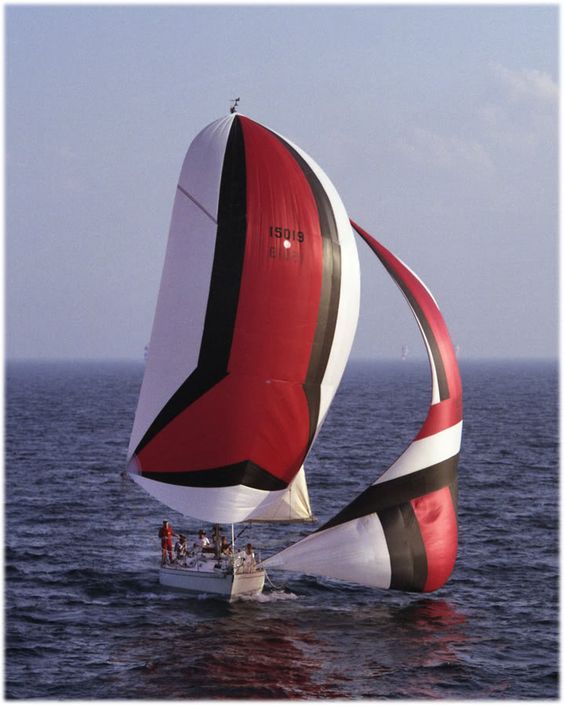
Latitude 38 Readers Identify the “Blooper”
On Friday we left our readers with something to think about while they enjoyed the weekend (hopefully aboard a sailboat). We asked: What is a blooper, within the sailing world? Many readers responded, and all were correct in their answers.
The simplest and most informative response came from Peter Mirrasoul — “It is usually a relatively lightweight full-bellied sail flown on the opposite side to the spinnaker. It is deployed when sailing deep downwind with the spinnaker to lend stability to the boat, compensating for a downwind death roll.”
Of course Peter wasn’t the only sailor to describe the blooper in this way. Bill Andrew, for example, wrote, “It’s the banana-shaped sail that flies on the opposite side of the boat as the spinnaker when running dead downwind, or on a deep reach.” He also added, “They were popular in the ’70’s and ’80’s with IOR boats that tended to have narrow, pinched sterns, and as a result were prone to ‘death rolling’ when dead downwind (particularly when passing under the Golden Gate!).”

Several readers referred to the IOR rules, with Patrick Broderick defining the blooper as an “Infernal, nearly uncontrollable flying sail designed to keep an IOR boat on its feet downwind.”
There was consensus about the blooper’s role in helping to stabilize the big IOR racing boats, as well as adding speed, while still conforming to the rules of the day. A boat could only fly one spinnaker at a time, David J. Gruver wrote, adding that the blooper was “measured as a genoa.” He added, “Sail designers adapted to the rule by creating a significantly curved luff, thus giving the sail its unique shape.”

Not everyone agreed that the blooper added speed, with Patrick Broderick commenting that he used one in the Vallejo races. “It didn’t help things much — usually ended up shrimping in San Pablo Bay.”
In February 2014, Sailing Magazine published a “not so complimentary” article about the blooper, in which Bill Schanen wrote, “I eventually figured out how to get more boatspeed out of a blooper — by leaving it in the garage.”
While some readers were of a similar mind set as Bill Schanen — “Two mistakes in search of a solution,” Mike F. wrote — others remembered the bloopers with a nostalgic air. Bill Nork commented, “No pole, free flying. Made things real interesting when jibing, as it had to be doused and then re-hoisted.” And Jim Q., who flew a blooper in the 1980s on an Esprit 37, added, “Fun fact … one had a person ‘trimming’ the blooper halyard because if it collapsed, the blooper’s foot was in the water. It was quite effective stopping the rock and roll … but boy, did it make jibes complicated.”
Thanks for all the great, blooper memories. You can read the rest of the comments here.

What about the ‘Golli Wobbler” or was that just am English name for Blooper
Gollywallber is used on a Schooner has a head on the main mast and on the fore mast and tacks at the foremast base with a sheet at the end of the main boom. It is a huge sail but not a “Blooper” which is really a genoa..
I thought that was a “fisherman?”